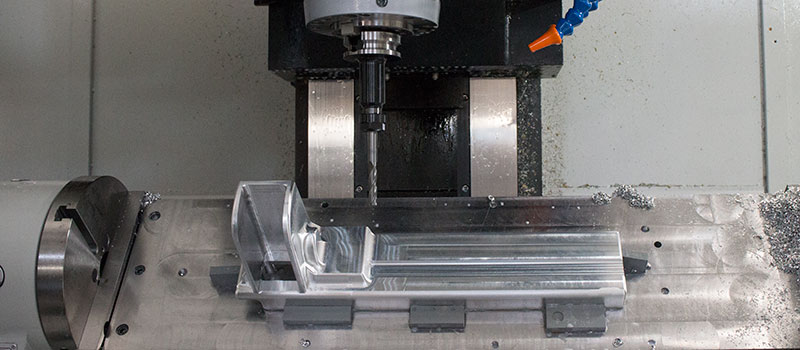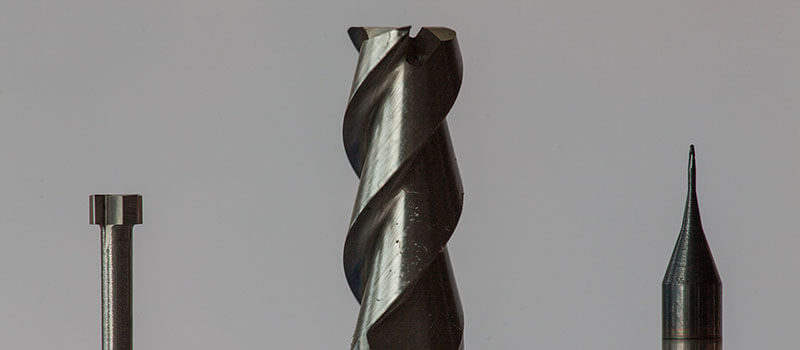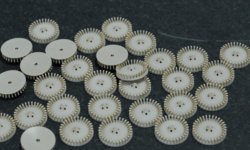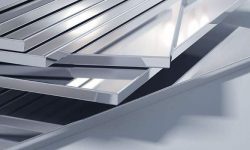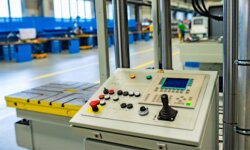Aluminum is an important industrial raw material. However, because of its relatively low hardness and large thermal expansion coefficient, it can easily deform when being machined into thin-walled and thin plate parts. In addition to improving tool performance and eliminating the internal stress of the material in advance, there are several steps that can be taken to reduce the deformation of the material as much as possible.
1. Symmetrical machining
For aluminum parts with a large processing allowance, it is necessary to avoid an excessive concentration of heat in order to create better heat dissipation and reduce thermal deformation. The method that can be taken to achieve this is called symmetrical processing.
Imagine, for example, that a 90 mm thick aluminum plate needs to be milled to 60 mm thick. If the milling side is immediately turned over to the other side, because each surface is processed to the final size, the continuous processing allowance will be large, which will cause the problem of heat concentration and the flatness of the alloy plate will only be able to reach 5 mm.
If the symmetrical processing method of two sides is used repeatedly, however, each surface can be processed at least two times until the final size is reached, which is good for heat dissipation, and flatness can be controlled at 0.3 mm.
2. Stratified multiple machining
When there are multiple cavities on the aluminum alloy plate parts, it is easy to twist the cavity wall because of the uneven force. The best way to solve the problem is to take a layered multiple processing method, which is to process all the cavities at the same time.
Rather than finishing the part all at once, however, the part can be divided into several layers and processed to the required size by layer by layer. The force applied to the parts will be more uniform and the probability of deformation will be smaller.
3. Select an appropriate cutting parameter
Cutting force and resultant cutting heat can be reduced by selecting proper cutting parameters. In the process of mechanical processing, if the cutting parameters are bigger than normal will leads to excessive cutting force, which can easily cause the deformation of the parts, as well as affecting the rigidity of the spindle and the durability of the tool.
Among all the factors of cutting parameters, the biggest influence on cutting force is the amount of back cutting depth. But while reducing the number of cutting tools is beneficial to ensure that parts are not deformed, the processing efficiency will at the same time be reduced.
The high-speed milling of numerical control machining can solve this problem. By reducing the back cutting depth, increasing the feed and improving the speed of the machine, machining can reduce the cutting force and guarantee processing efficiency.
4. Optimize ability of cutting tools
The material and geometric parameters of cutting tools have an important influence on cutting force and cutting heat. The correct selection of cutting tools and parameters is therefore very important for reducing the machining distortion of parts.
Geometric parameters of a tool that can affect performance:
Front angle
The front angle must be properly configured to preserve blade strength, or the sharp edge will become worn out. Correctly setting the front angle can also reduce cutting deformation, ensure smooth chip removal and reduce cutting force and cutting temperature. Do not use the negative front angle tool.
Rear angle
The size of the rear angle has a direct effect on both flank wear and machined surface quality, and cutting thickness is an important parameter to consider when configuring the rear angle. When rough milling, the large feed rate, heavy cutting load and large heat mean that the tool must account for heat dissipation. The rear angle should therefore be smaller. In precision milling, however, sharp edges are required to reduce the friction between the flank and the machined surface and reduce elastic deformation. In these cases, the rear corner should be larger.
Helix angle
To make milling stable and reduce milling force, the helix angle should be as large as possible.
Main deflection angle
Properly reducing the main deflection angle can improve heat dissipation and reduce the average temperature of the processing area.
Improve the physical condition of cutting tools
Reducing the number of milling cutter teeth can increase capacity, which can be useful when processing aluminum alloy. Because of the properties of aluminum alloy, cutting deformation is larger, and a large capacity for chip space is needed.
The radius of the tank bottom should be larger and the number of the milling cutter teeth lower. For example, two cutter teeth are used for the milling cutter below 20 mm, and three cutter teeth are used in the milling cutter of 30 ~ 60 mm to avoid the deformation of thin-walled aluminum alloy parts caused by the clogging of the chip.
Precision grinding cutter teeth
The roughness of the cutting edge of cutter teeth should be less than Ra=0.4um. Before using the new knives, use fine oil stones to gently grind the front and rear edges of the teeth to eliminate burrs and slight zigzag patterns. In this way, not only can cutting heat be reduced, cutting deformation can also be minimized.
Strictly control tool wear
When tools get worn, workpiece surface roughness increases, cutting temperature increases and workpiece deformation increases. Therefore, in addition to selecting tool materials with good wear resistance, the tool wear standard should not be greater than 0.2 mm, otherwise built-up nodules can occur. In cutting, the temperature of the workpiece should not exceed 100 degrees to prevent deformation.
5. Different approaches
Rough cutting and finishing require different approaches. Rough machining requires cutting the excess material on the blank surface in the shortest time with the fastest cutting speed, forming the geometric contour required for finishing. The emphasis here is on the processing efficiency and the rate of material removal.
Finishing machining, on the other hand, requires higher machining accuracy and surface quality. Emphasis should be placed on milling quality. As the cutting thickness of the cutter teeth decreases from the maximum to zero, the machining hardening phenomenon will be greatly reduced and the deformation of the parts can be suppressed to a certain extent.
6. Two-times compression of thin-walled parts
When machining thin-walled aluminum alloy parts, clamping force can cause deformation. In order to reduce deformation of the workpiece caused by clamping, the pressed parts should be unclamped before finishing the final dimension, releasing pressure and restoring parts to their original shape before reapplying pressure a second time.
The second pressing action point is best on the supporting surface, and the clamping force should be in the direction of greatest rigidity. If everything is correct, the compression force should be able to hold the workpiece without loosening. This method requires an experienced operator, but can ensure that deformation of machined parts machined is minimized.
7. Drilling and milling
Machining the parts with a cavity presents its own problems. If the milling cutter is directly applied to parts, cuttings will not be smooth due to the insufficient debris space of the milling cutter. This leads to the accumulation of a large amount of cutting heat, the expansion and deformation of parts and even potential breakage of the part or knife.
The best method for dealing with this problem is to pre-drilling and then milling. This involves first drilling the hole with a tool no smaller than the milling cutter, and then putting the milling cutter into the hole to start milling.
Hope the information we provide helps. 3ERP has a rich experience providing aluminum CNC machining services as well as other metal and plastic parts for prototyping and production. Please feel free to contact our team if you need any further manufacturing suggestion.


